
Ponencia en Iberradio 2023
El pasado día 16 de septiembre tuvo lugar la mayor feria de radiocomunicacioens amateur en España: Iberradio. Como parte del programa, tuve la …
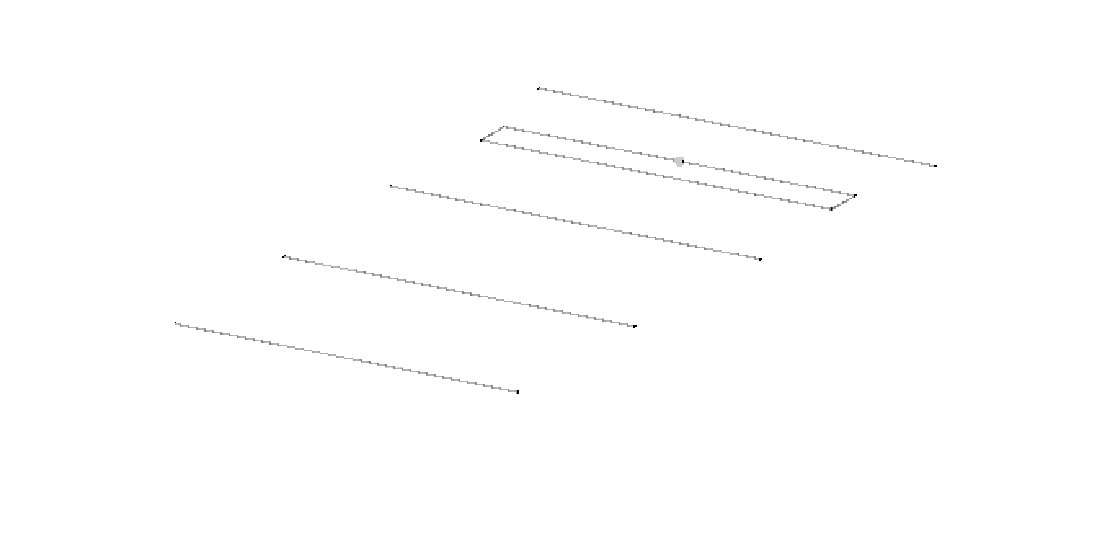
While Yagis using a folded dipole as the radiant element have been part of television systems since decades, they only started arriving at the amateur radio comunity some years ago. Raposo-2 aims to be one of the first open-source projects that makes building ultra-high performance homemade LFA yagis possible for everybody.
One of the main advantages of the so-called LFA yagis is the use of a folded dipole as the active element instead of a Hertz dipole. This results in lower Side Lobes Levels, which, at the same time, translates to lower noise and interference levels. Raposo antennae aim to use this design topology in order to offer high gain while maintaining low noise on the receiver side. Note that these antennae have been optimised for achieving an optimal radiation pattern, perfect for working DX and even EME with an array of Raposos.
Raposo-2 offers the perfect specifications for getting the most from the 2m band:
Low noise: its reduced SLL results in lower received noise, specially when pointing to higher elevations (satellites, EME and MS)
Two different versions: we have designed two different versions of the antenna: the original Raposo-2, ideal for those who want to achieve maximum performance on this band, and Raposo-2 Mini, with only 1,7m of boomlength, ideal for reduced spaces, using in arrays or even working MS thanks to its lower gain
Optimised for Amatur Radio: Raposo-2 is the ideal antenna for Amateur Radio, since it has been designed specifically for its use at long range radio communications
Different materials: it is possible to buils this antenna by using either non-conductive or conductive booms, thanks to the 3D printable supports from our GitHub repository. Besides, you can choose the diameter of the elements beween M3 and M6 metrics according to your needs
| Raposo-2 | Raposo-2 Mini |
|---|---|
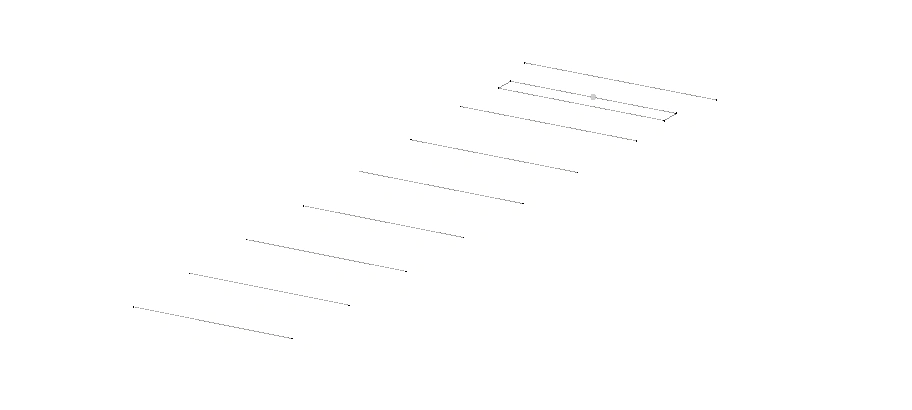 | 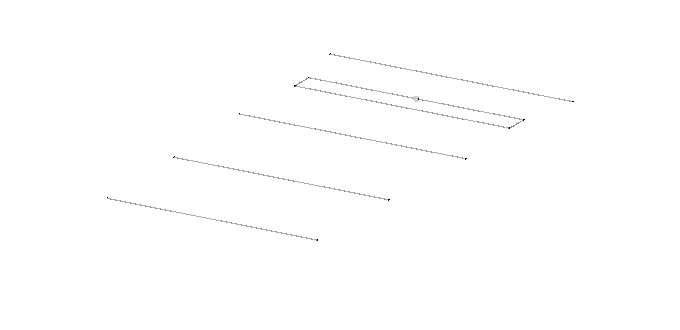 |
| Specification | Value | Units |
|---|---|---|
| Gain | 12.89 | dBi |
| 3 dB Beamwidth (E plane) | 42.2 | º |
| 3 dB Beamwidth (H plane) | 48.1 | º |
| Efficiency | 99.8 | % |
| Impedance | 50 | Ω |
| Lowest SWR | 1.03 | - |
| Bandwidth | 1.97 | MHz |
| 1.37 | % | |
| SLL (E plane) | -22.3 | dB |
| SLL (H plane) | -15.4 | dB |
| Polarization | Linear | - |
| XPD | >60 | dB |
| F/B | 23.7 | dB |
Note: bandwidth is measured between points at 1.5 SWR (very conesrvative measure). XPD is referred to broadside direction
| Simulated radiation pattern | Simulated SWR |
|---|---|
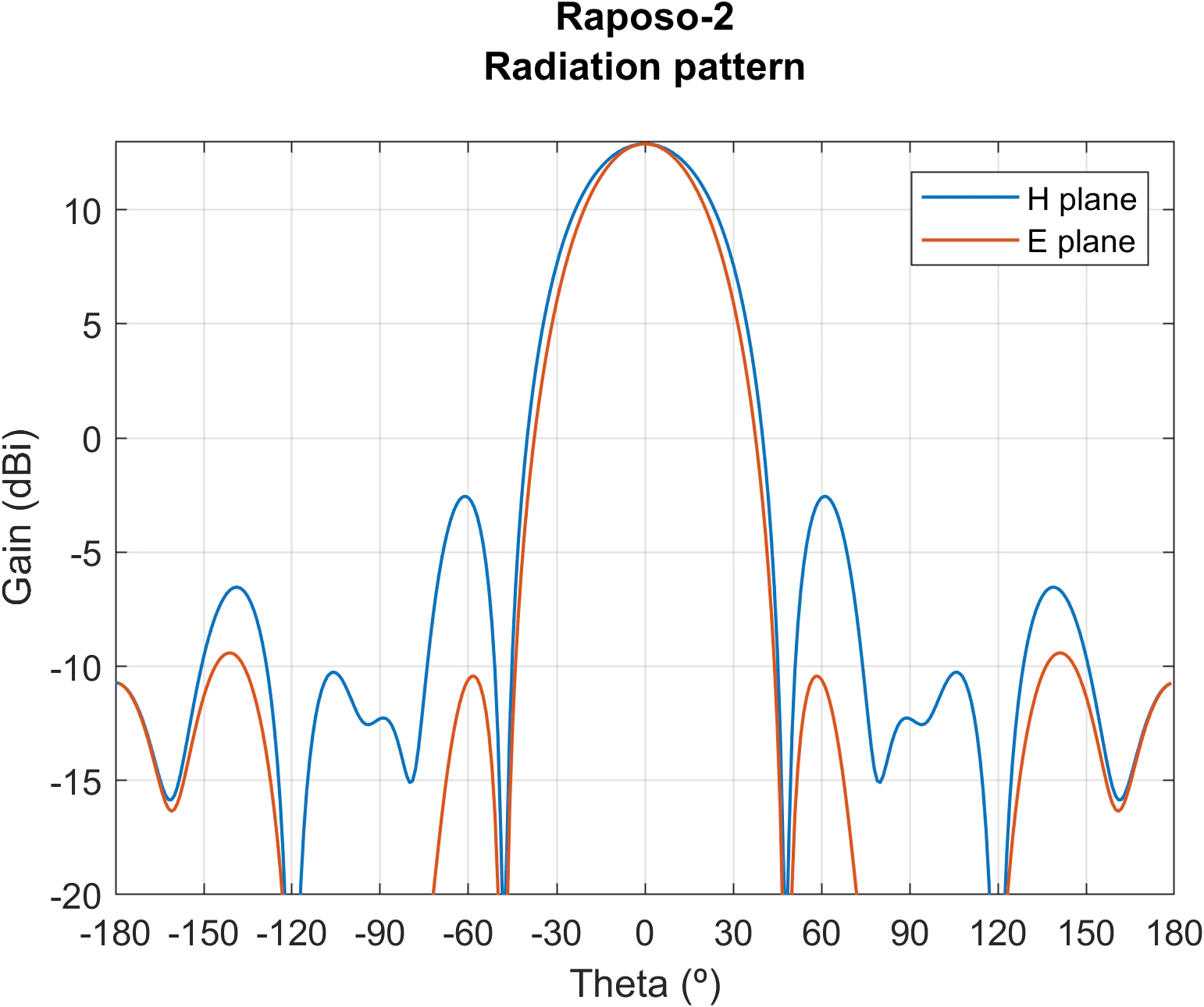 | 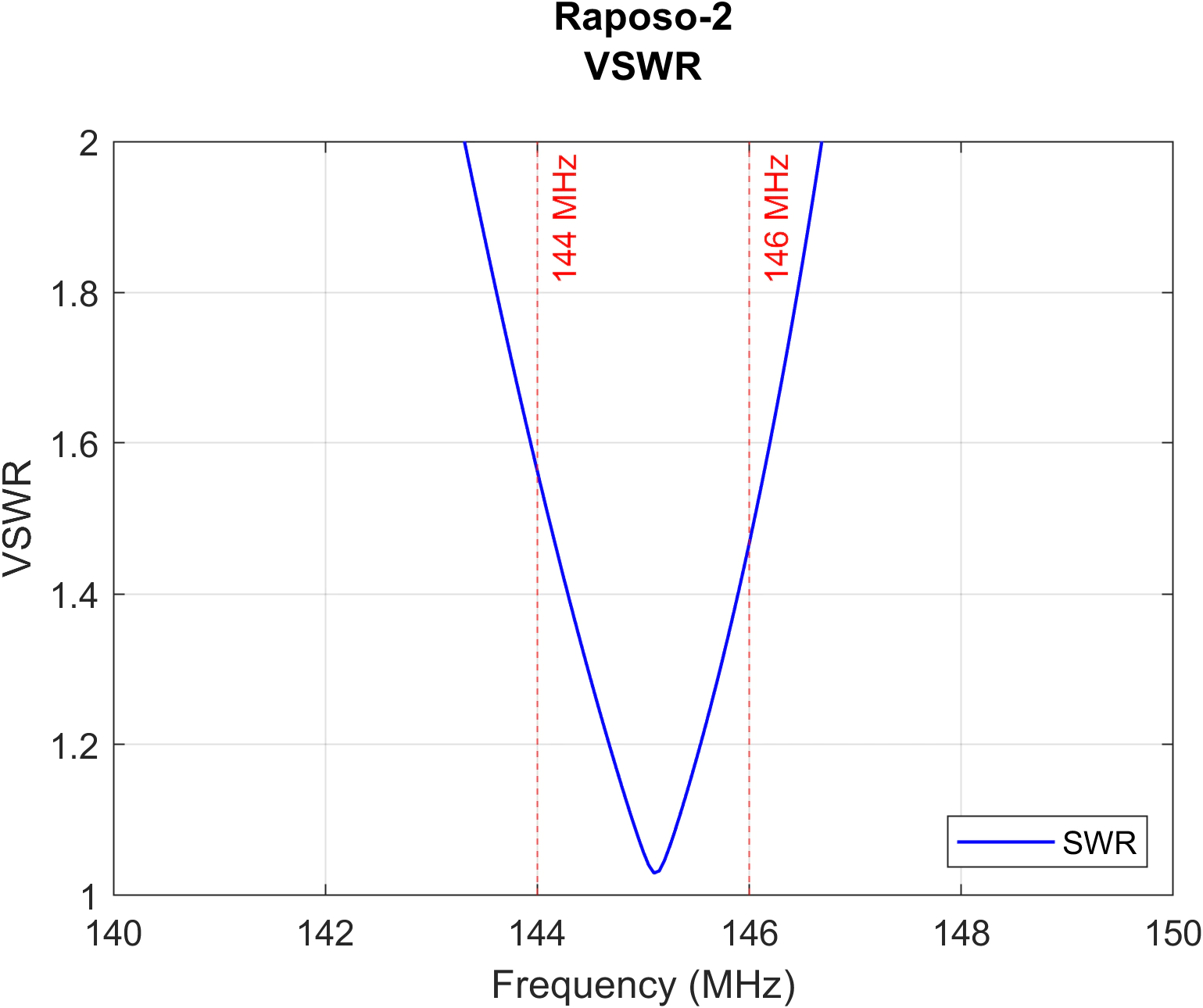 |
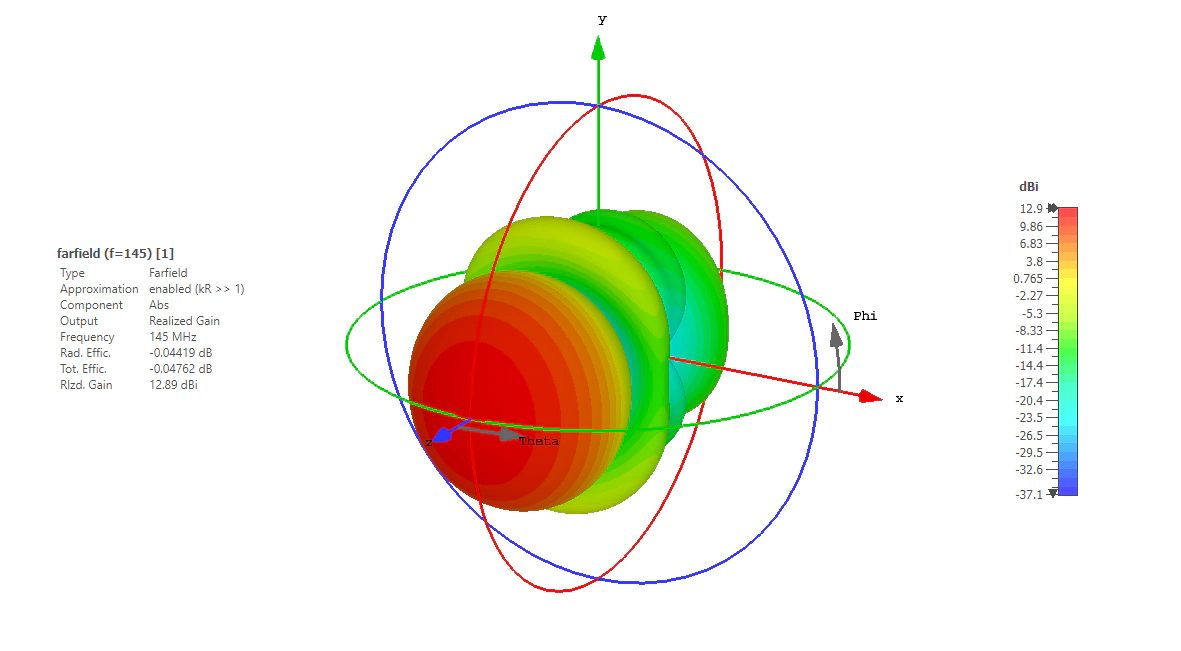
| Specification | Value | Units |
|---|---|---|
| Gain | 10.6 | dBi |
| 3 dB Beamwidth (E plane) | 51.9 | º |
| 3 dB Beamwidth (H plane) | 66.2 | º |
| Efficiency | 99.7 | % |
| Impedance | 50 | Ω |
| Lowest SWR | 1.03 | - |
| Bandwidth | 1.98 | MHz |
| 1.38 | % | |
| SLL (E plane) | -20.8 | dB |
| SLL (H plane) | -16.0 | dB |
| Polarization | Linear | - |
| XPD | >60 | dB |
| F/B | 21.2 | dB |
Note: bandwidth is measured between points at 1.5 SWR (very conesrvative measure). XPD is referred to broadside direction
| Simulated radiation pattern | Simulated SWR |
|---|---|
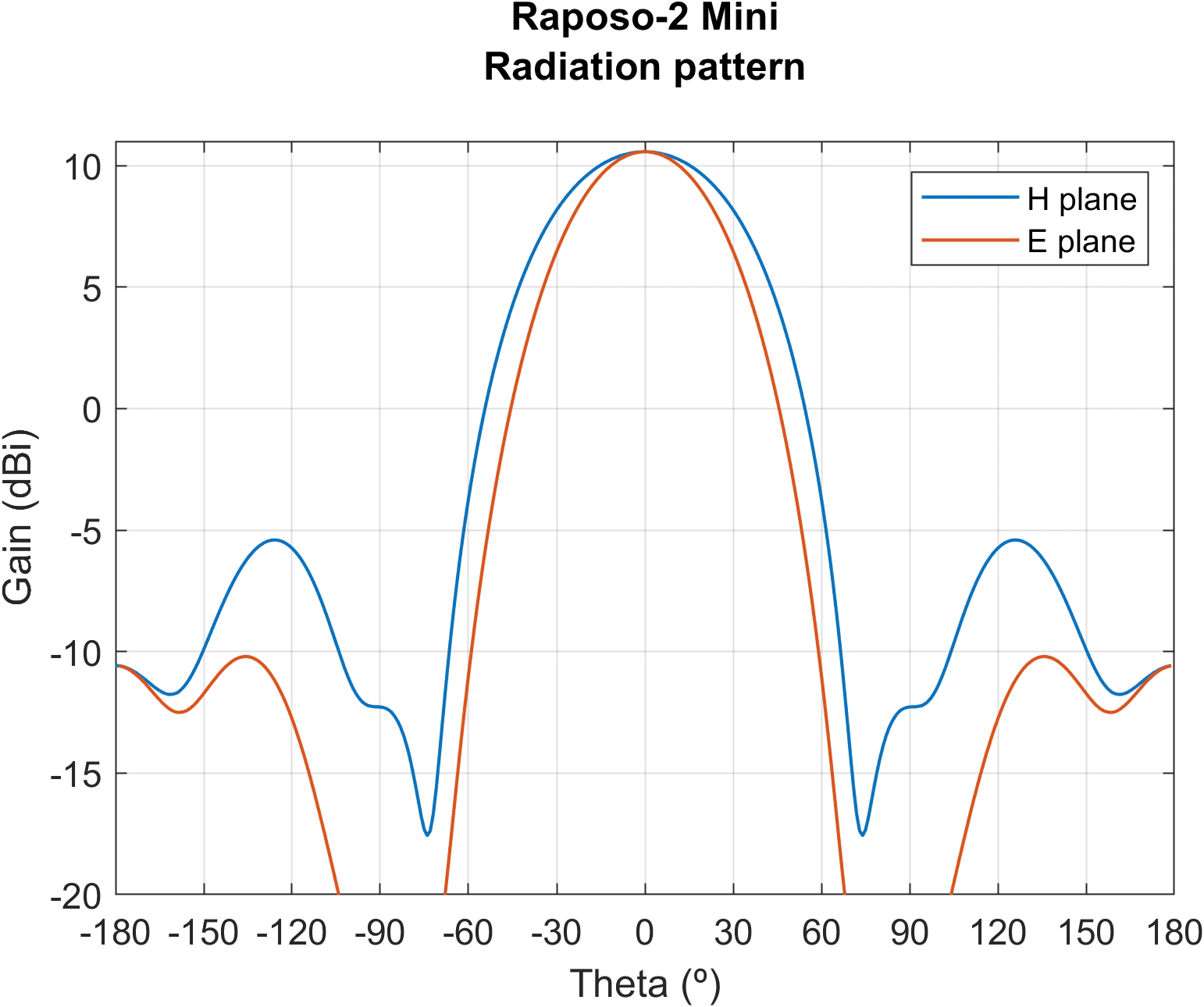 | 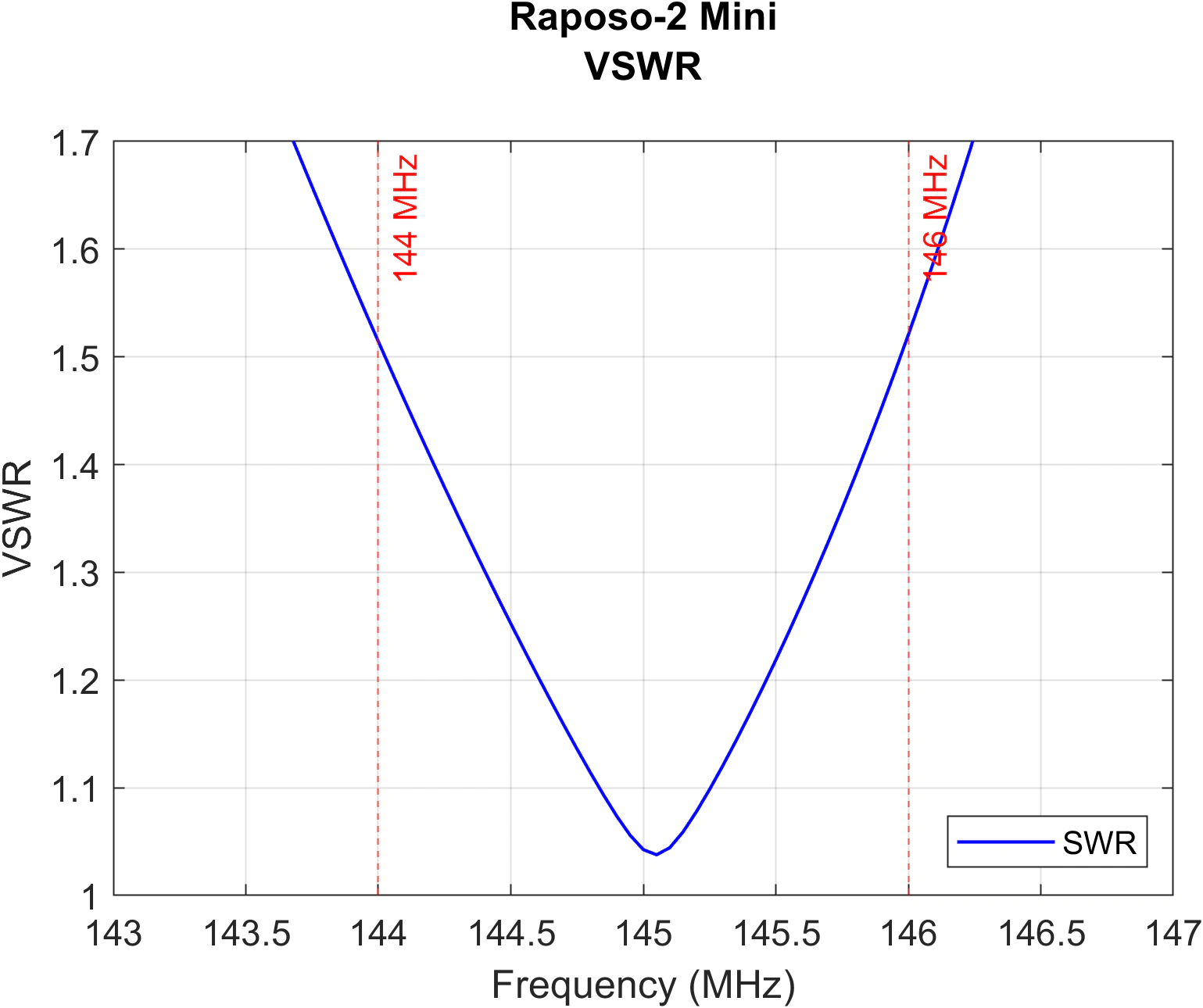 |
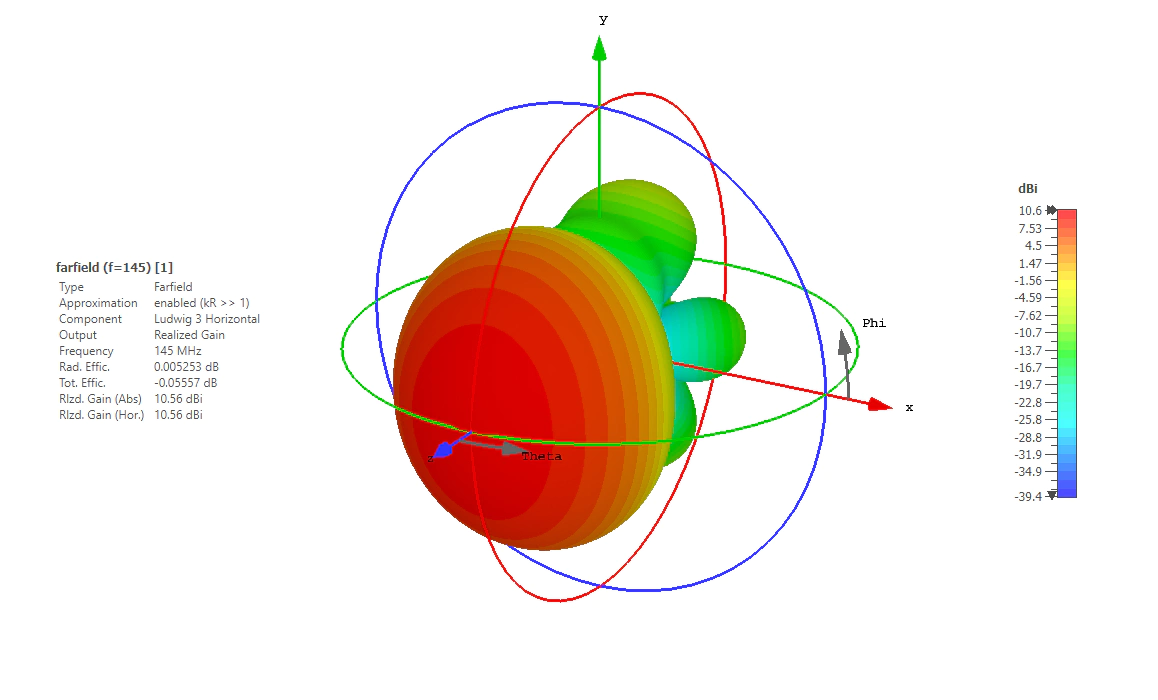
All of the measurements, plans, .stl files and more can be found in our GitHub repository
For this antenna, we will not provide any specific build instruction. This is because they can vary a lot depending on the materials you decide to use and the specific application you want to use this antenna for. Nevertheless, here are some general guidelines or advices for achiving its full potential:
Non-conductive fiberglass boom is recommended. However, Raposo-2 and Raposo-2 Mini can be build by using a conductive boom separed at least 5mm from the antenna elements. You can find several 3D-printable element supports in our repository, and choose the one that fits your needs the best.
Use white ABS/PETG with enought infill if you are going to use this antenna for extended periods of time in places with high temperatures.
The optimal diameter of the elements is either M3 or M4. A higher diameter may deform the radiation pattern and increase the overall weight of the antenna.
The use of a balun or RF choke is recommended. Use either some ferrite cores at the end of the coaxial cable or a suitable 1:1 balun/transformer.
If you plan on building the Raposo-2 Mini version, recall that the length of the dipole is approximately 1cm longer than the corresponding length for the original Raposo-2. The rest of the measures remain the same.
It is recommended to place this antenna at least 1.8m above ground.
It is possible to stack more than one Raposo-2 in order to build an antenna array. Optimal stacking distance in order to achieve increased gain without generating large grating lobes is between 2.3 and 2.5m for horizontal stacking and 2.1 to 2.35 for vertical stacking.
The use of a vertical metal tubing perpendicular to the elements as antenna support does not affect the overall performance of Raposo-70.


El pasado día 16 de septiembre tuvo lugar la mayor feria de radiocomunicacioens amateur en España: Iberradio. Como parte del programa, tuve la …
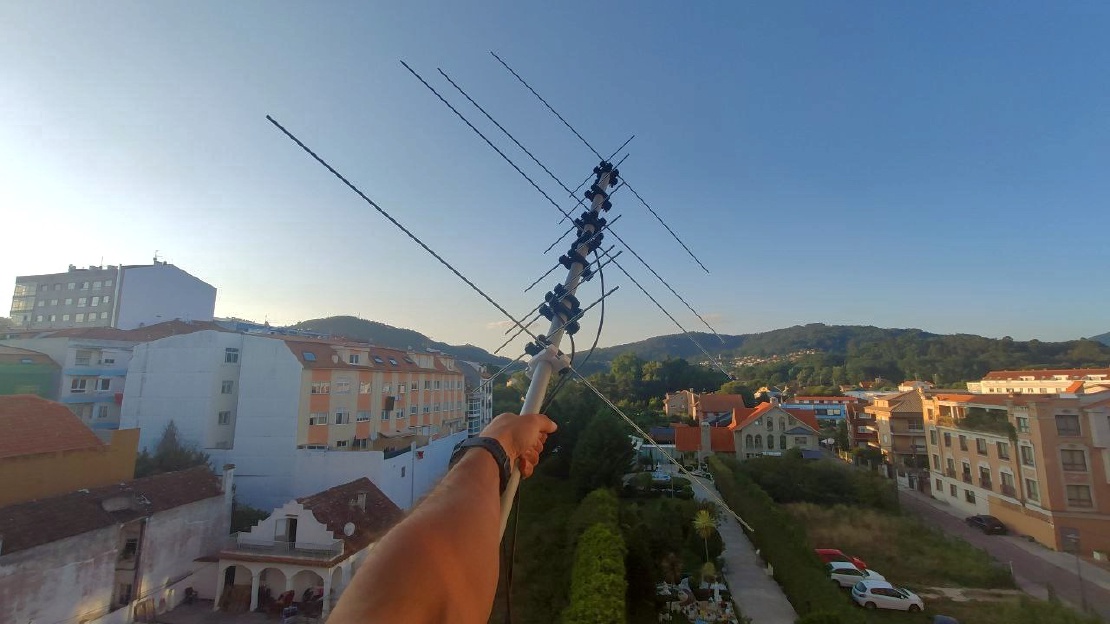
Today, we are glad to present you a very special antenna: Aiga. Aiga is a double band VHF/UHF antenna designed for portable use. In this way, it uses …